Facial Beauty Prediction
Facial beauty prediction is the process of predicting the attractiveness of a person's face in images or videos.
Papers and Code
Reflections on Diversity: A Real-time Virtual Mirror for Inclusive 3D Face Transformations
Mar 25, 2025Real-time 3D face manipulation has significant applications in virtual reality, social media and human-computer interaction. This paper introduces a novel system, which we call Mirror of Diversity (MOD), that combines Generative Adversarial Networks (GANs) for texture manipulation and 3D Morphable Models (3DMMs) for facial geometry to achieve realistic face transformations that reflect various demographic characteristics, emphasizing the beauty of diversity and the universality of human features. As participants sit in front of a computer monitor with a camera positioned above, their facial characteristics are captured in real time and can further alter their digital face reconstruction with transformations reflecting different demographic characteristics, such as gender and ethnicity (e.g., a person from Africa, Asia, Europe). Another feature of our system, which we call Collective Face, generates an averaged face representation from multiple participants' facial data. A comprehensive evaluation protocol is implemented to assess the realism and demographic accuracy of the transformations. Qualitative feedback is gathered through participant questionnaires, which include comparisons of MOD transformations with similar filters on platforms like Snapchat and TikTok. Additionally, quantitative analysis is conducted using a pretrained Convolutional Neural Network that predicts gender and ethnicity, to validate the accuracy of demographic transformations.
Uncertainty-oriented Order Learning for Facial Beauty Prediction
Sep 01, 2024



Previous Facial Beauty Prediction (FBP) methods generally model FB feature of an image as a point on the latent space, and learn a mapping from the point to a precise score. Although existing regression methods perform well on a single dataset, they are inclined to be sensitive to test data and have weak generalization ability. We think they underestimate two inconsistencies existing in the FBP problem: 1. inconsistency of FB standards among multiple datasets, and 2. inconsistency of human cognition on FB of an image. To address these issues, we propose a new Uncertainty-oriented Order Learning (UOL), where the order learning addresses the inconsistency of FB standards by learning the FB order relations among face images rather than a mapping, and the uncertainty modeling represents the inconsistency in human cognition. The key contribution of UOL is a designed distribution comparison module, which enables conventional order learning to learn the order of uncertain data. Extensive experiments on five datasets show that UOL outperforms the state-of-the-art methods on both accuracy and generalization ability.
MetaFBP: Learning to Learn High-Order Predictor for Personalized Facial Beauty Prediction
Nov 23, 2023



Predicting individual aesthetic preferences holds significant practical applications and academic implications for human society. However, existing studies mainly focus on learning and predicting the commonality of facial attractiveness, with little attention given to Personalized Facial Beauty Prediction (PFBP). PFBP aims to develop a machine that can adapt to individual aesthetic preferences with only a few images rated by each user. In this paper, we formulate this task from a meta-learning perspective that each user corresponds to a meta-task. To address such PFBP task, we draw inspiration from the human aesthetic mechanism that visual aesthetics in society follows a Gaussian distribution, which motivates us to disentangle user preferences into a commonality and an individuality part. To this end, we propose a novel MetaFBP framework, in which we devise a universal feature extractor to capture the aesthetic commonality and then optimize to adapt the aesthetic individuality by shifting the decision boundary of the predictor via a meta-learning mechanism. Unlike conventional meta-learning methods that may struggle with slow adaptation or overfitting to tiny support sets, we propose a novel approach that optimizes a high-order predictor for fast adaptation. In order to validate the performance of the proposed method, we build several PFBP benchmarks by using existing facial beauty prediction datasets rated by numerous users. Extensive experiments on these benchmarks demonstrate the effectiveness of the proposed MetaFBP method.
Attribute Controllable Beautiful Caucasian Face Generation by Aesthetics Driven Reinforcement Learning
Aug 09, 2022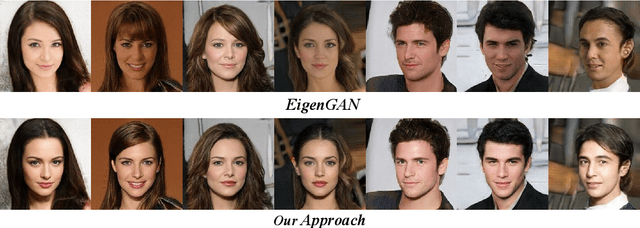
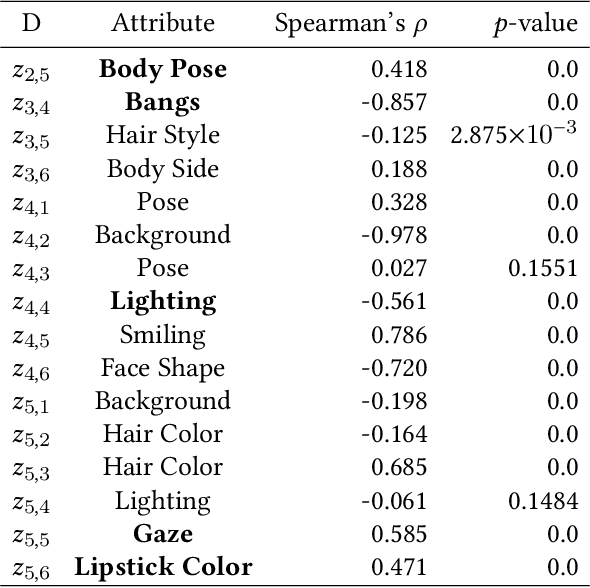
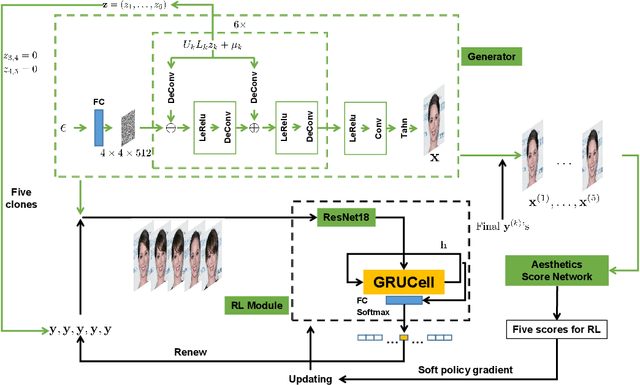
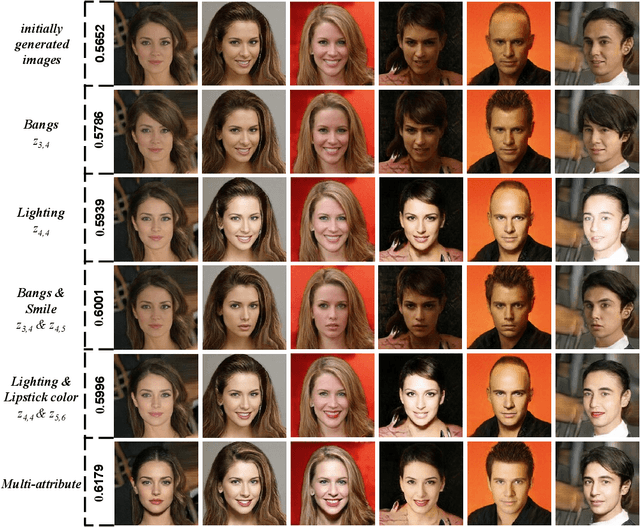
In recent years, image generation has made great strides in improving the quality of images, producing high-fidelity ones. Also, quite recently, there are architecture designs, which enable GAN to unsupervisedly learn the semantic attributes represented in different layers. However, there is still a lack of research on generating face images more consistent with human aesthetics. Based on EigenGAN [He et al., ICCV 2021], we build the techniques of reinforcement learning into the generator of EigenGAN. The agent tries to figure out how to alter the semantic attributes of the generated human faces towards more preferable ones. To accomplish this, we trained an aesthetics scoring model that can conduct facial beauty prediction. We also can utilize this scoring model to analyze the correlation between face attributes and aesthetics scores. Empirically, using off-the-shelf techniques from reinforcement learning would not work well. So instead, we present a new variant incorporating the ingredients emerging in the reinforcement learning communities in recent years. Compared to the original generated images, the adjusted ones show clear distinctions concerning various attributes. Experimental results using the MindSpore, show the effectiveness of the proposed method. Altered facial images are commonly more attractive, with significantly improved aesthetic levels.
Ethically aligned Deep Learning: Unbiased Facial Aesthetic Prediction
Nov 09, 2021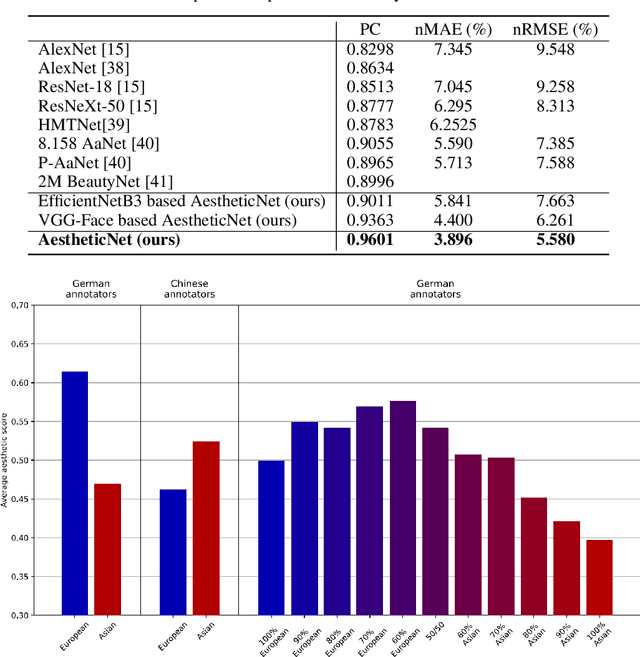
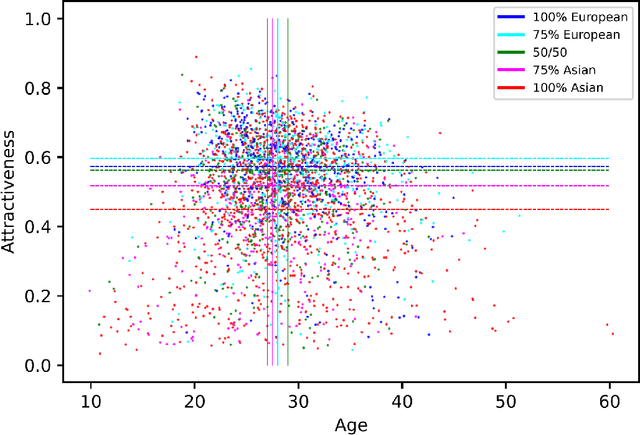
Facial beauty prediction (FBP) aims to develop a machine that automatically makes facial attractiveness assessment. In the past those results were highly correlated with human ratings, therefore also with their bias in annotating. As artificial intelligence can have racist and discriminatory tendencies, the cause of skews in the data must be identified. Development of training data and AI algorithms that are robust against biased information is a new challenge for scientists. As aesthetic judgement usually is biased, we want to take it one step further and propose an Unbiased Convolutional Neural Network for FBP. While it is possible to create network models that can rate attractiveness of faces on a high level, from an ethical point of view, it is equally important to make sure the model is unbiased. In this work, we introduce AestheticNet, a state-of-the-art attractiveness prediction network, which significantly outperforms competitors with a Pearson Correlation of 0.9601. Additionally, we propose a new approach for generating a bias-free CNN to improve fairness in machine learning.
Photofeeler-D3: A Neural Network with Voter Modeling for Dating Photo Impression Prediction
May 10, 2019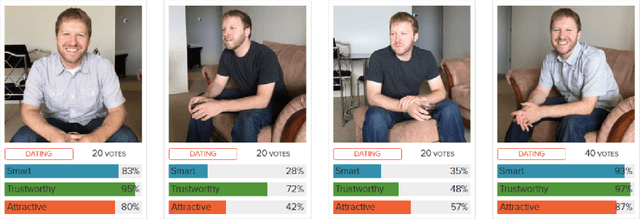
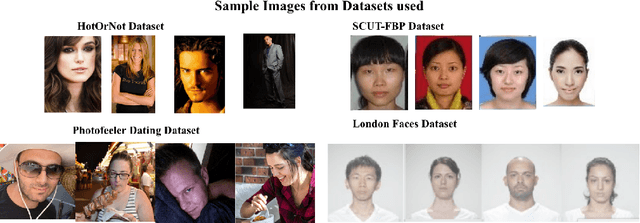

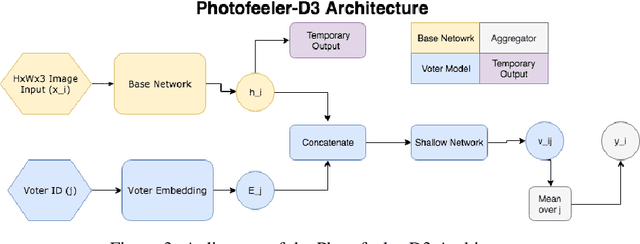
In just a few years, online dating has become the dominant way that young people meet to date, making the deceptively error-prone task of picking good dating profile photos vital to a generation's ability to form romantic connections. Until now, artificial intelligence approaches to Dating Photo Impression Prediction (DPIP) have been very inaccurate, unadaptable to real-world application, and have only taken into account a subject's physical attractiveness. To that effect, we propose Photofeeler-D3 - the first convolutional neural network as accurate as 10 human votes for how smart, trustworthy, and attractive the subject appears in highly variable dating photos. Our "attractive" output is also applicable to Facial Beauty Prediction (FBP), making Photofeeler-D3 state-of-the-art for both DPIP and FBP. We achieve this by leveraging Photofeeler's Dating Dataset (PDD) with over 1 million images and tens of millions of votes, our novel technique of voter modeling, and cutting-edge computer vision techniques.
A Bayesian Evaluation Framework for Ground Truth-Free Visual Recognition Tasks
Jun 20, 2020
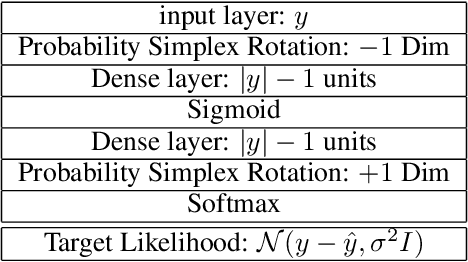


An interesting development in automatic visual recognition has been the emergence of tasks where it is not possible to assign ground truth labels to images, yet still feasible to collect annotations that reflect human judgements about them. Such tasks include subjective visual attribute assignment and the labeling of ambiguous scenes. Machine learning-based predictors for these tasks rely on supervised training that models the behavior of the annotators, e.g., what would the average person's judgement be for an image? A key open question for this type of work, especially for applications where inconsistency with human behavior can lead to ethical lapses, is how to evaluate the uncertainty of trained predictors. Given that the real answer is unknowable, we are left with often noisy judgements from human annotators to work with. In order to account for the uncertainty that is present, we propose a relative Bayesian framework for evaluating predictors trained on such data. The framework specifies how to estimate a predictor's uncertainty due to the human labels by approximating a conditional distribution and producing a credible interval for the predictions and their measures of performance. The framework is successfully applied to four image classification tasks that use subjective human judgements: facial beauty assessment using the SCUT-FBP5500 dataset, social attribute assignment using data from TestMyBrain.org, apparent age estimation using data from the ChaLearn series of challenges, and ambiguous scene labeling using the LabelMe dataset.
Transferring Rich Deep Features for Facial Beauty Prediction
Mar 20, 2018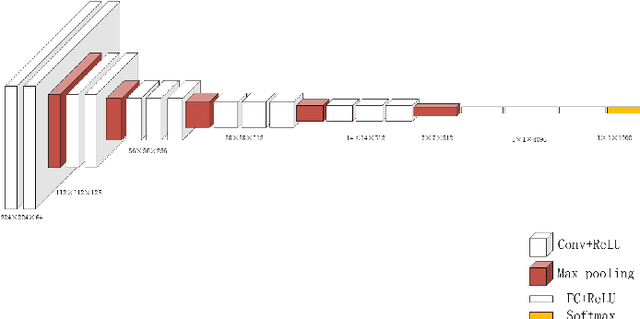
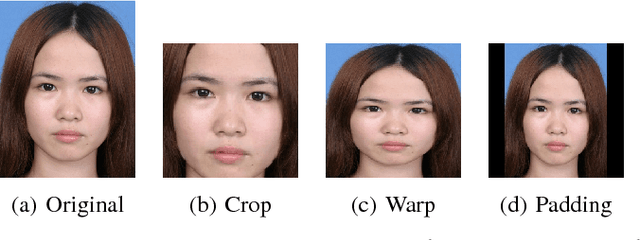
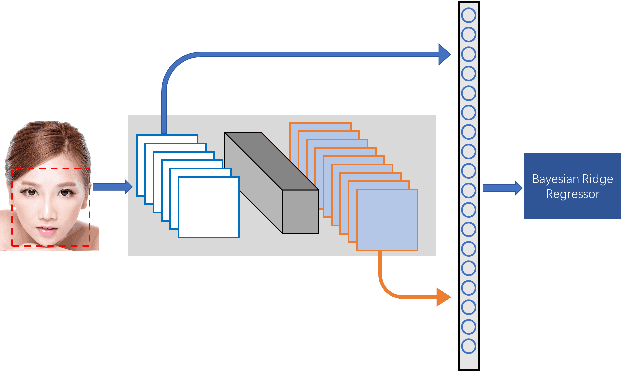
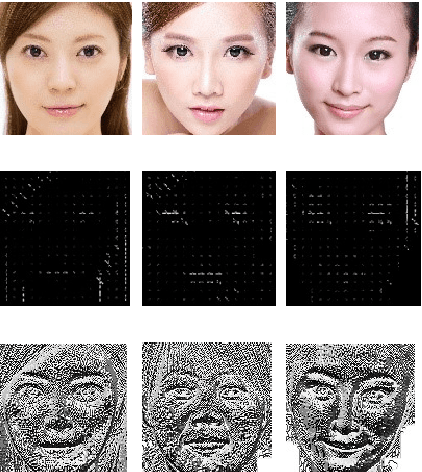
Feature extraction plays a significant part in computer vision tasks. In this paper, we propose a method which transfers rich deep features from a pretrained model on face verification task and feeds the features into Bayesian ridge regression algorithm for facial beauty prediction. We leverage the deep neural networks that extracts more abstract features from stacked layers. Through simple but effective feature fusion strategy, our method achieves improved or comparable performance on SCUT-FBP dataset and ECCV HotOrNot dataset. Our experiments demonstrate the effectiveness of the proposed method and clarify the inner interpretability of facial beauty perception.
SCUT-FBP5500: A Diverse Benchmark Dataset for Multi-Paradigm Facial Beauty Prediction
Jan 19, 2018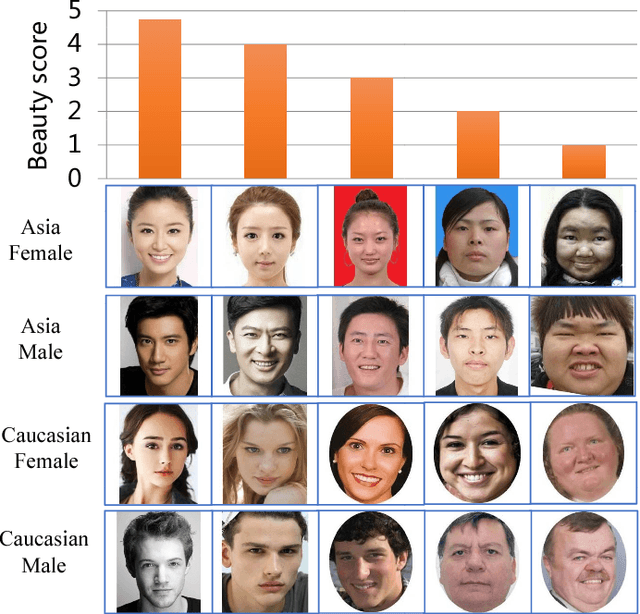
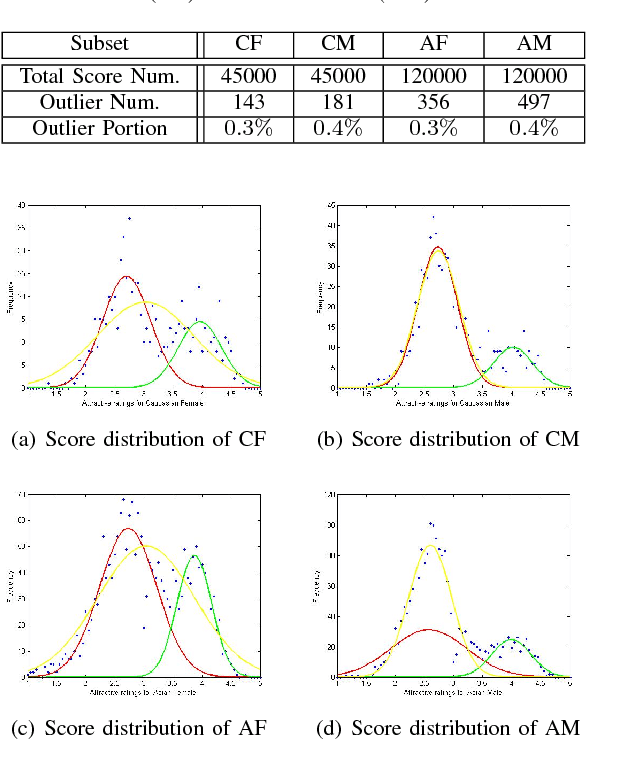
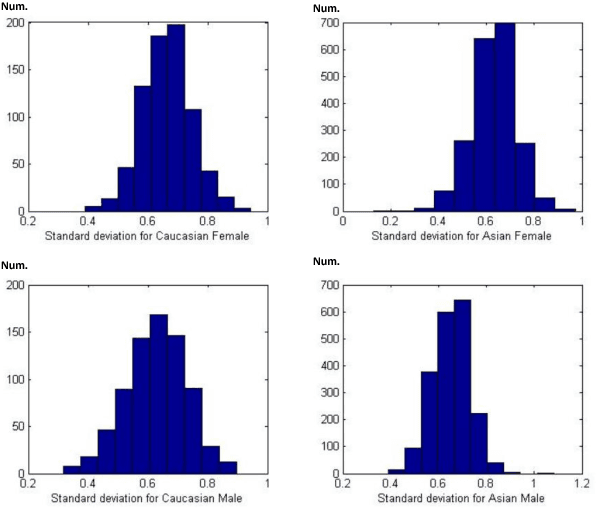
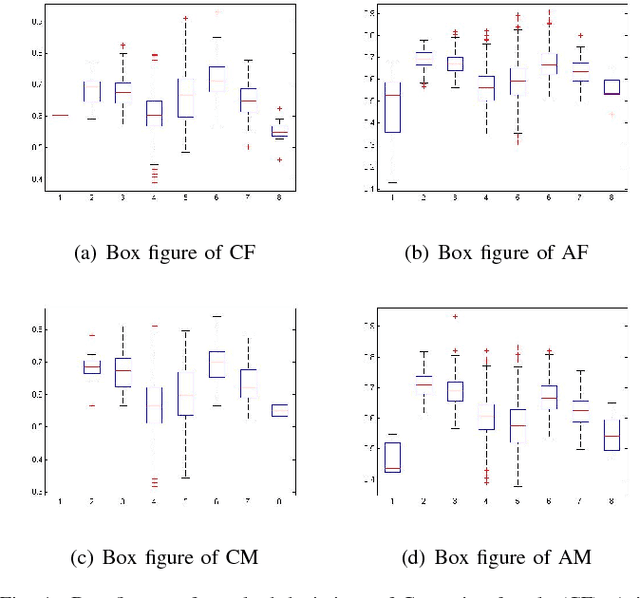
Facial beauty prediction (FBP) is a significant visual recognition problem to make assessment of facial attractiveness that is consistent to human perception. To tackle this problem, various data-driven models, especially state-of-the-art deep learning techniques, were introduced, and benchmark dataset become one of the essential elements to achieve FBP. Previous works have formulated the recognition of facial beauty as a specific supervised learning problem of classification, regression or ranking, which indicates that FBP is intrinsically a computation problem with multiple paradigms. However, most of FBP benchmark datasets were built under specific computation constrains, which limits the performance and flexibility of the computational model trained on the dataset. In this paper, we argue that FBP is a multi-paradigm computation problem, and propose a new diverse benchmark dataset, called SCUT-FBP5500, to achieve multi-paradigm facial beauty prediction. The SCUT-FBP5500 dataset has totally 5500 frontal faces with diverse properties (male/female, Asian/Caucasian, ages) and diverse labels (face landmarks, beauty scores within [1,~5], beauty score distribution), which allows different computational models with different FBP paradigms, such as appearance-based/shape-based facial beauty classification/regression model for male/female of Asian/Caucasian. We evaluated the SCUT-FBP5500 dataset for FBP using different combinations of feature and predictor, and various deep learning methods. The results indicates the improvement of FBP and the potential applications based on the SCUT-FBP5500.
Beholder-GAN: Generation and Beautification of Facial Images with Conditioning on Their Beauty Level
Feb 25, 2019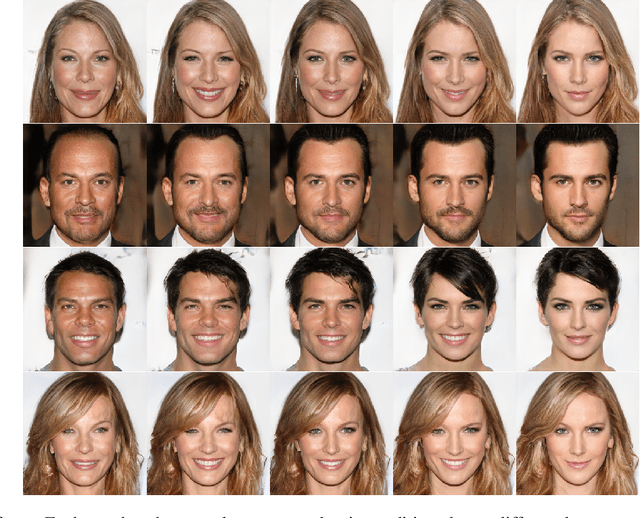

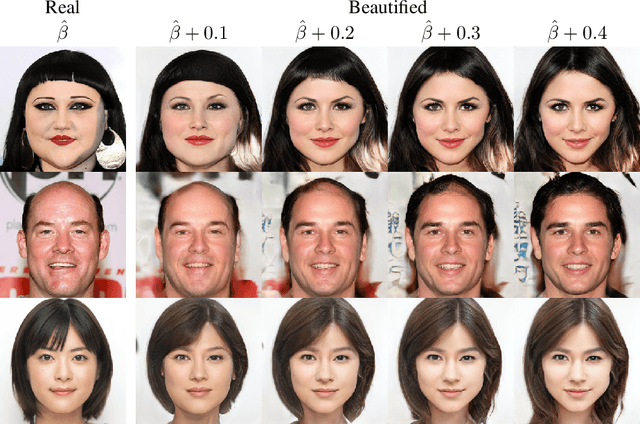
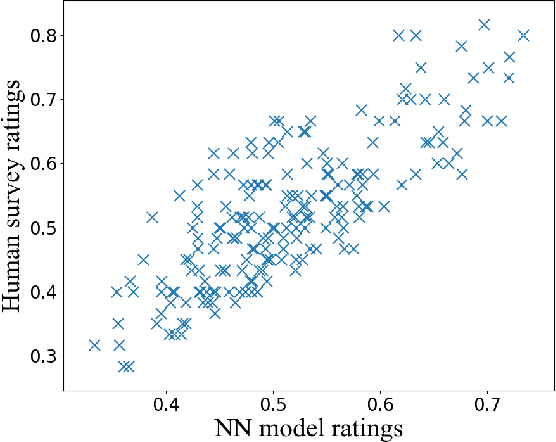
Beauty is in the eye of the beholder. This maxim, emphasizing the subjectivity of the perception of beauty, has enjoyed a wide consensus since ancient times. In the digitalera, data-driven methods have been shown to be able to predict human-assigned beauty scores for facial images. In this work, we augment this ability and train a generative model that generates faces conditioned on a requested beauty score. In addition, we show how this trained generator can be used to beautify an input face image. By doing so, we achieve an unsupervised beautification model, in the sense that it relies on no ground truth target images.
 Add to Chrome
Add to Chrome Add to Firefox
Add to Firefox Add to Edge
Add to Edge